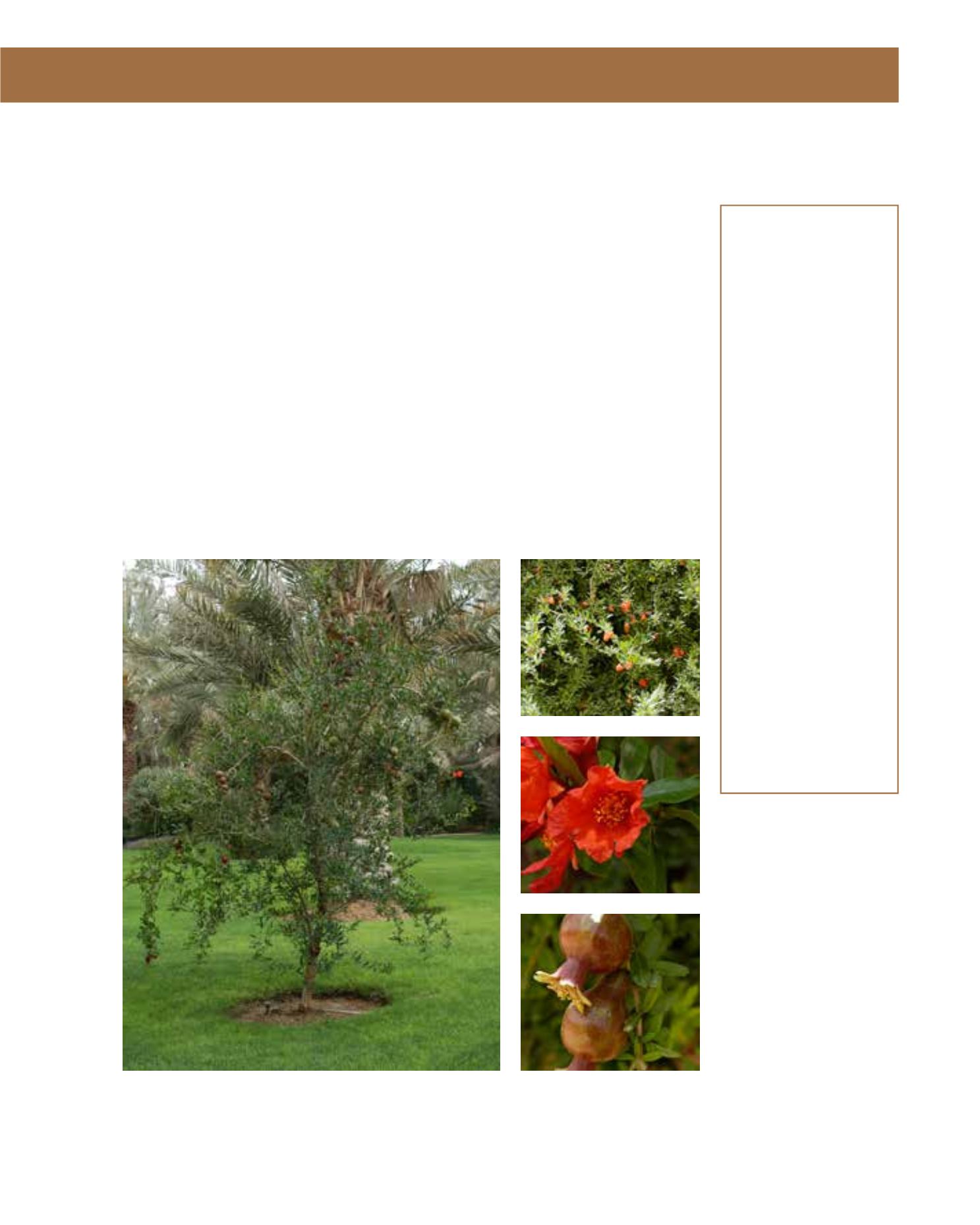

GENERAL
Origin
:
sub-Mediterranean,
Mediterranean,
sub-tropical
Vigour
:
slow-growing
Humidity
:
semi-arid, semi-
humid, very
humid
Propagation :
sowing and
pricking out
Maintenance :
low
CONDITIONS
Urban climate :
resistant
Dessication :
vulnerable
Stagnant water :
vulnerable
Irrigation
:
medium
Salinity/ppm :
moderate (2000
ppm)
Hardiness
:
-12°C
SHAPE
Type
:
shrub, tree
Height
:
2 m-7 m
Spread
:
2 m-8 m
Foliage
:
deciduous
FLOWER
Colour
:
deep orange,
bright red
Size
:
3 cm - 4 cm
Period
:
March -
September
FRUIT
Type of fruit :
berry
Fruit size
:
5 cm - 12 cm
Toxicity
:
produced for
food, edible, fruit
The common name of this medium-sized shrub is Pomegranate, or rumman in Arabic. It has
its origins in southwest and central Asia. It can be found throughout the Mediterranean, and
is frequent in the farms and gardens of Arriyadh. The Pomegranate prefers a Mediterranean to
sub-tropical climate. The slow-growing tree reaches a height between 2 and 7 metres. The crown
is mostly dense and round in shape. The foliage is green and the shoots pastel-red. The leaves
are arranged oppositely, and their form is entire and lanceolate. The flowers and fruits are often
found together on one plant. Flowering begins in spring. The bloom is a calyx in deep-orange to
bright-red. The ripe fruit is bright red. It is apple-shaped and round. The fruit contains granate,
red, pearl-like juicy pits which are edible and very healthy. Maintenance requirements are mode-
rate, because the shrub is slow growing; pruning is not often required. Punica granatum has no
major soil requirements. Irrigation should be medium and the salinity content not higher than
medium. The air-humidity should be sufficient. The plant otherwise loves a sunny location and
it is heat-resistant. Propagation is by sowing and pricking. Pomegranates are highly attractive
as specimens and as grouped plants, together with plenty of potential for linear planting and
hedges. This bee-attracting plant is useful for screens, in public open spaces, as park planting, in
pedestrian precincts and in private parks. The possible fruit drop should be taken into account
when grown next to pathways.
252
Punica granatum,
Punicaceae
Pomegranate,
rumman
















